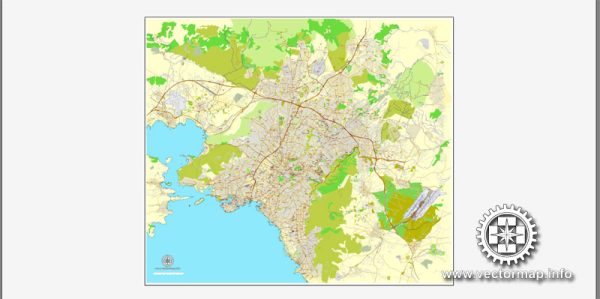The history of urban development in Athens, Greece, is a rich and complex tale that spans thousands of years. Athens is one of the world’s oldest continuously inhabited cities, with a history that dates back to around 3000 BC. Here is a brief overview of the key periods and developments in the urban history of Athens:
- Ancient Athens (5th to 4th century BC):
- Athens reached its zenith during the 5th century BC when it became the center of the ancient Greek world. This period is often referred to as the Golden Age of Athens. The city was known for its democratic government, philosophical achievements, and architectural wonders, including the Acropolis and the Parthenon.
- Roman and Byzantine Period (1st century BC – 14th century AD):
- Athens came under Roman control in the 1st century BC and later became part of the Byzantine Empire. During this time, the city experienced changes in its urban fabric and governance, as well as the spread of Christianity.
- Ottoman Period (15th – 19th century):
- In 1458, the Ottomans captured Athens, leading to a period of Ottoman rule that lasted for nearly four centuries. The city’s population and importance declined during this time, and many classical monuments and structures fell into disrepair.
- Greek War of Independence (1821-1829):
- The Greek War of Independence against the Ottoman Empire in the early 19th century led to Athens being liberated in 1833. This marked a turning point in the city’s history, as it became the capital of the newly established Kingdom of Greece.
- Neoclassical and Modern Athens (19th century – early 20th century):
- In the 19th century, Athens underwent significant urban development, with the construction of neoclassical buildings, wide avenues, and the establishment of a more organized city layout. Notable architects like Ernst Ziller contributed to this era.
- 20th Century:
- The 20th century brought further modernization and expansion to Athens. Major developments included the establishment of new neighborhoods, transportation networks, and infrastructure. The city also experienced population growth and industrialization.
- Post-World War II and Contemporary Athens:
- After World War II, Athens saw rapid urbanization and the construction of high-rise buildings. The 2004 Summer Olympics prompted extensive urban regeneration and infrastructure projects, leading to the redevelopment of areas like Omonia Square and the creation of new sports facilities.
- Challenges and Urban Planning:
- Athens faces challenges related to traffic congestion, pollution, and preserving its historical heritage while accommodating modern needs. Urban planning efforts have been ongoing, with a focus on sustainability, public transport, and preserving the city’s historical and architectural heritage.
Today, Athens is a vibrant and dynamic city that blends its ancient history with contemporary living. It remains a global center of culture, education, and tourism while preserving the remnants of its storied past. The city continues to evolve, offering a fascinating juxtaposition of ancient and modern elements in its urban fabric.


 Author: Kirill Shrayber, Ph.D.
Author: Kirill Shrayber, Ph.D.